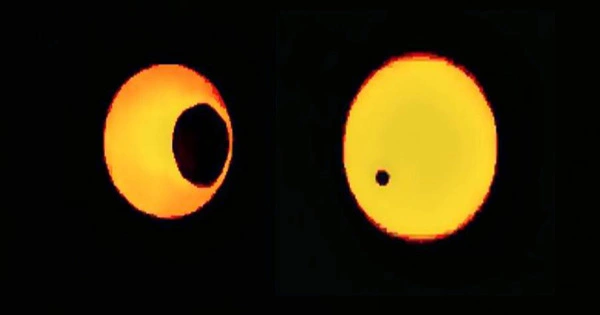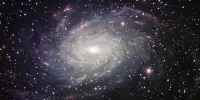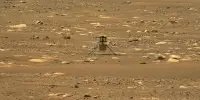Perseverance has captured a spectacular solar eclipse on Mars as the strangely curved moon Phobos passes in front of the Sun. The spectacular footage shows Phobos cutting a fast gash over our star in all its potato-like splendour. Many eclipses of Phobos and Mars’ second moon, Deimos, have been observed by rovers on Mars, but NASA claims that this is the most zoomed-in Phobos eclipse ever captured from the surface of Mars, at the greatest frame rate yet.
In a statement, Rachel Howson of Malin Space Science Systems in San Diego, one of the Mastcam-Z team members who runs the camera, stated, “I knew it was going to be fantastic, but I didn’t anticipate it to be this spectacular.” The whole incident only took 40 seconds on April 2, Perseverance’s 397th sol — far faster than on Earth, where solar eclipses last 2.5-3 minutes – but then Phobos is 157 times smaller than our Moon (and Deimos is even smaller).
Phobos is interesting for a variety of reasons, despite its small size of 22.2 kilometers (13.8 miles). It’s the Solar System’s nearest orbital moon, completing a circle around Mars in under seven hours at a distance of 9,000 kilometers (5,600 miles). It contains a single enormous crater and a bizarre chain of craters across its surface, and it and Deimos might have been part of a larger moon – perhaps a portion of Mars itself. Perseverance’s Mastcam-Z camera, which has a solar filter and is extremely zoomable, is the next generation from Curiosity’s. It’s ideal for capturing eclipses because the filter functions like sunglasses, lowering the intensity of the sunlight.
“You can see subtleties in the form of Phobos’ shadow, like ridges and bumps on the moon’s topography,” said Mark Lemmon, who oversaw the majority of the Mars rovers’ Phobos studies. “Sunspots can also be seen.” It’s also interesting that you can watch the eclipse in the same way that the rover did from Mars.” Scientists will be able to better comprehend the moon’s orbit and how its gravity impacts the interior of Mars thanks to the information collected.
The tidal forces of the moon tug on the planet’s innards, as well as its crust and mantle, and each eclipse helps astronomers track the small shift in Phobos’ orbit over time. Phobos is on a gradual collision course with Mars, which will happen in tens of millions of years. Astronomers can enhance forecasts of when this will happen by recording the slight shift in Phobos’ orbit. Until then, it has a plethora of enthralling eclipses, which we will hopefully be able to photograph in more detail.














